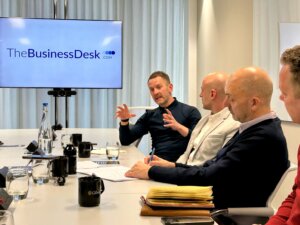Imagine for a moment we’re on a team building a website for our own flower shop. What sort of things would we want to see on it?
How about things like:
• Prices
• Types of flower we offer
• Our deals
• Opening hours
• Delivery costs
• Reviews
• Information about our flower shop etc.
These all seem like the good things to have on there, right?
What if we get those requirements, hand it over to developers who then spend a few weeks putting it together, we then launch it and find out that it’s not as useful as it could be.
Why? Our requirements seemed bulletproof.
Well it turns out – most people visiting the website just wanted to know how to take care of the flowers they received as a gift. Thus, we must now invest more time and cost in changing the website to accommodate for the needs of our majority of users when this should have been spotted in the initial stages. How did this get overlooked?
The question we should be asking ourselves too, is why are these requirements getting dictated solely by us in the first place?
This may seem obvious, but by starting with the end user when approaching product development and having them influence the decisions we make can reduce risk of developing solutions the customer doesn’t need, increasing our cost and efficiency.
However, a lot of organisations may not take this approach, it could be for several reasons like that’s “just how we do it”, politics or even just because someone said to go ahead and make something. Product development roadmaps may also be dictated in a similar way, with no real prioritisation aligned to consumer demand.
Putting the customer as the driver for everything is called Customer Driven Development. This isn’t a new practice, but is however getting more and more popular and not surprisingly so 0 By having the customer influence what or how we create something can help us to avoid making similar mistakes and increase efficiency when creating new products or services.
The flipside of this approach is called Product Driven Development, whereby the product is created first and the customers found later. This carries a significant amount of risk too – An idea for an app, or website that may seem good on paper but without stopping and checking the consumer demands, it could end up being a disastrous waste of resource. Sure, it may be easy to envision everyone using an imagined app but in practice when it’s delivered “Tinder for squirrels” might not generate that much traction.
So how can we design for the customer? Some methods might include:
Ask for input or listen out for it – Maximise customer contact, forums and feedback tools can help us keep the finger on the pulse with customers. It’s useful when prioritising product development, if many people are asking for a certain feature or product, then doesn’t it make sense to see to that first?
Get insight from metrics – data from how customers have been interacting with products / services can be key to influencing what changes are introduced next. Analytics can be the best tool to help make an informed judgement. For example, if customers are not behaving as expected, then something is wrong with the design, journey or even how it’s being pitched to them. Instead of making something new, perhaps fix what is already there.
User Experience Testing – sitting down with current customers or even potential ones which match target demographics can give some great insight into how the products or services are interacted with and perceived. This can be invaluable in making the right decision when designing or prioritising a product. If a usability or perception trend appears, then this must represent a problem or opportunity which exists currently.
Personas – See who interacts with the products / services and create a series of characters which fits each one; for example, a young professional, or retired customer might have different use cases, environments and scenarios when using each product. Get into their mind-set and think about how each of them will be interacting with them. Like UX Testing, this can help to envision scenarios which weren’t picked up on before.
Conversions – What does successful interaction look like? How can you better help your customers get there? What can we influence to increase that conversion rate? Is it finding information? Buying a product? Looking at how the customer can be guided to their desired result can be greatly beneficial for both parties.
By adopting some of these techniques as and when needed it can then start to let the desires and behaviours of customers form the basis of the decisions and provide better favoured outcomes, improving prioritisation effectiveness, design and engagement.
Next time there is a request to start create something, don’t start with the ‘what’ like we did with the flower shop… instead, start with the ‘who’.


